Titled How One Word Can Change the Game: Case Study of State Capture and the South African Social Security Agency and released on Wednesday, a new report reveals how the “currency of power” as well as the “bartering of political favours by manipulation of state institutions (trading of fear and favours)” lie at the heart of the wider project of the political capture of the South African Social Security Agency.
The report, by Professor Mark Swilling, convener of the State Capacity Research Project, an interdisciplinary, inter-university research partnership, was co-authored by Robyn Foley of the Centre for Complex Systems.
While the Betrayal of Promise report sought to expose Jacob Zuma-centred power elites and the subversion of the concept of Radical Economic Transformation to serve rent-seeking practices, this report found that a key element in the Sassa capture was the blurring of the line between the ANC and the state as set out in the Constitution.
“It is these blurred lines between party and state which perhaps ‘allow’ the political party collective to turn a blind eye when state resources are utilisedto the benefit of the party,” the authors note.
This situation, during the Zuma era, provided a smokescreen “to loot and plunder state resources” for personal gain.
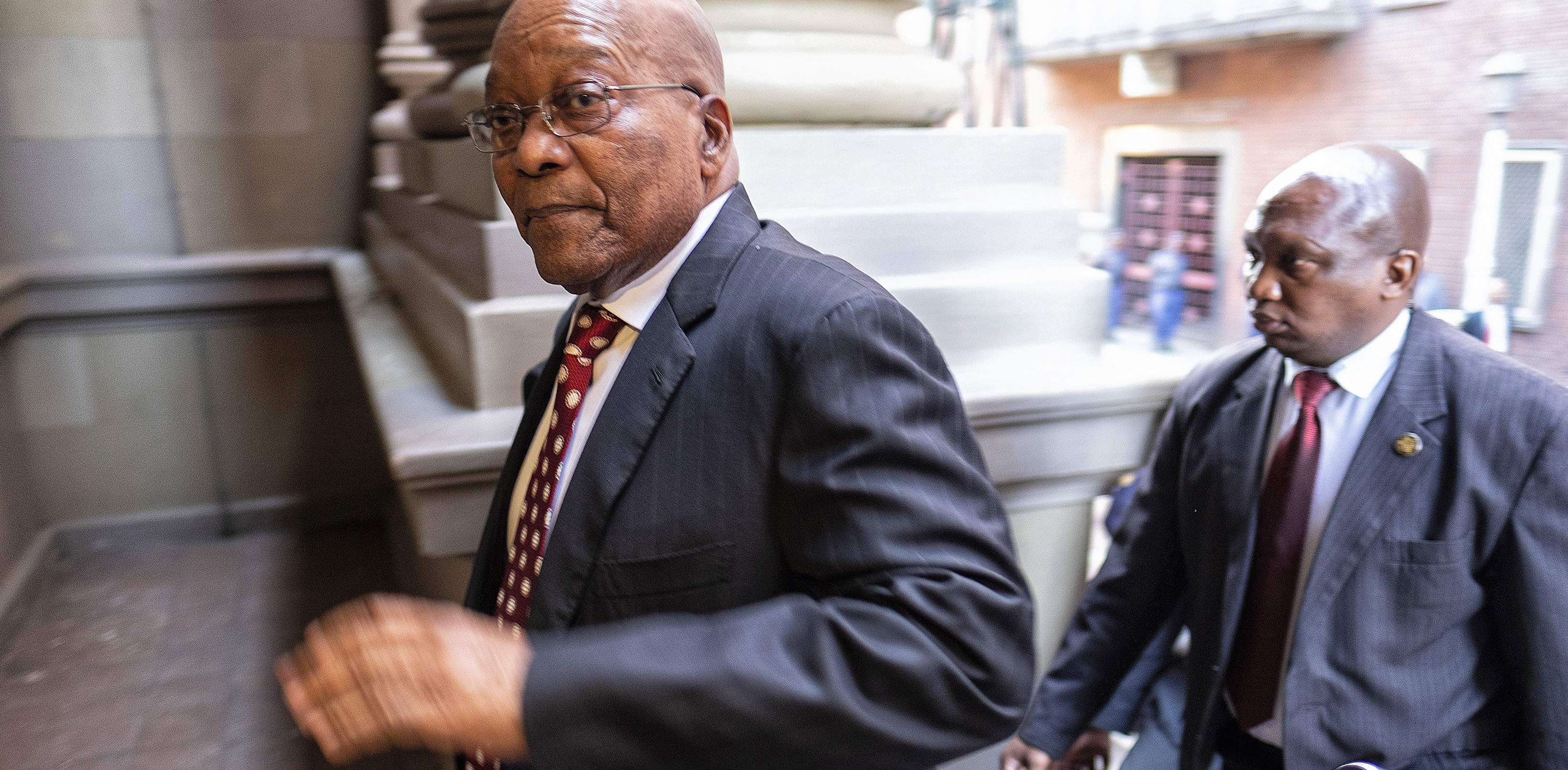
Former President Jacob Zuma . (Archive photo EPA-EFE/MARCO LONGARI)
The association of social grants with the ANC as a political party, was, the authors claim, “one of the most powerful tools the party can leverage when it comes to drumming up support and winning votes in elections.”
The networks for this “silent coup” that occurred in Sassa and that ended up almost jeopardising the payment of social grants to around 17-million vulnerable South Africans on several occasions began with the appointment of two ministers. Edna Molewa in 2009 followed by her successor, Bathabile Dlamini, in 2010 as the Minister of the Department of Social Development.
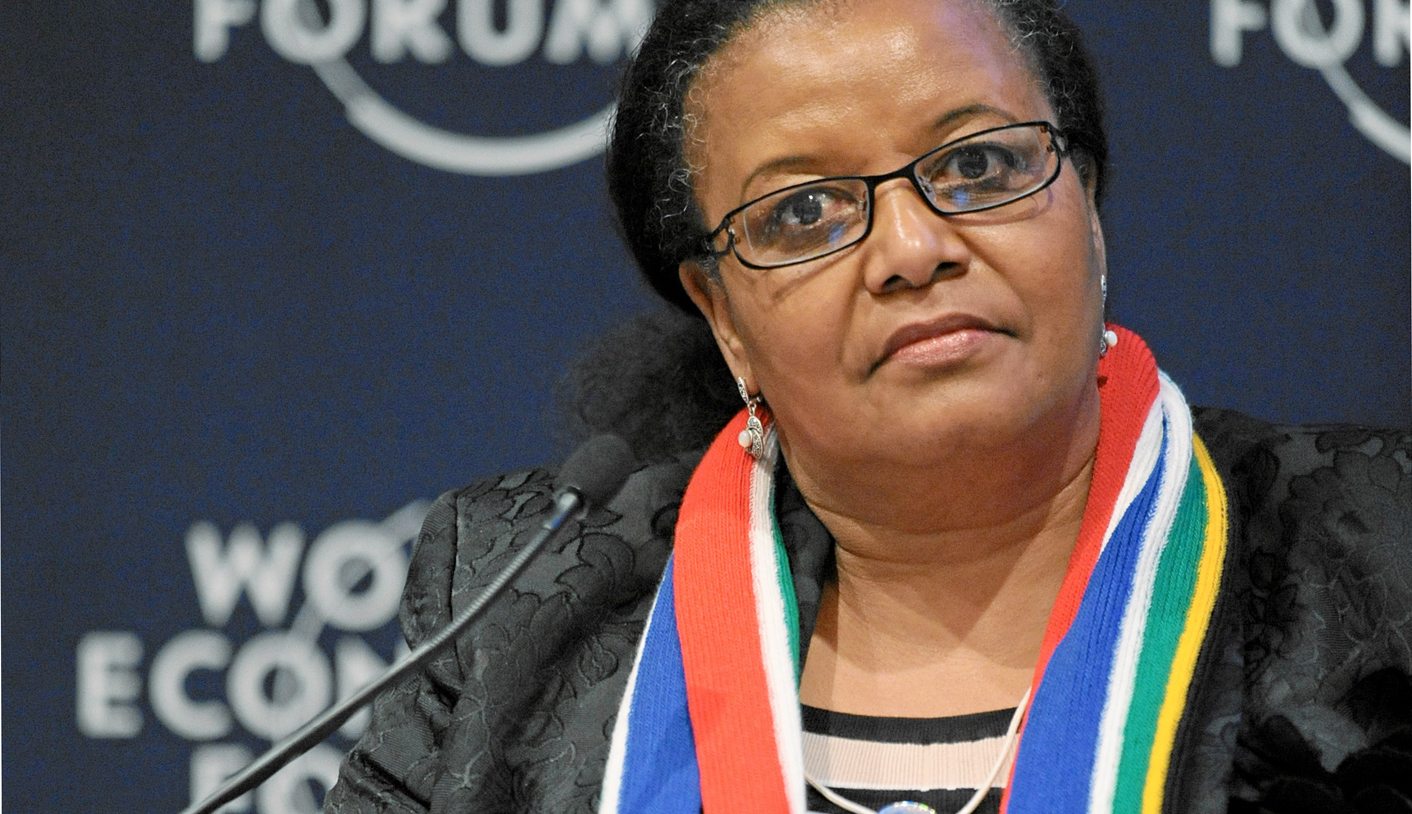
Minister Edna Molewa. (Archive Photo courtesy World Economic Forum )
Dlamini’s surprise election as head of the ANCWL in 2015, a key to the appointment of ANC leadership, also contributed to her “currency of power” and ability to bypass so many established practices in law.
The capturing of Sassa, says the report, also entailed “securing access to rent-seeking opportunities by ‘shaking down’ regulations, in particular the manipulation of tender processes”.
This is how the relationship between Sassa and CPS for the nationwide payment of social grants was accomplished and solidified.
“By changing just one word in the tender specifications, where ‘preferred’ changing to ‘must’ changed the rules of the game,” the authors found.
The next step was the securing of control over strategic procurement opportunities “by intentionally weakening key technical institutions and formal executive processes”.
“In this case, it was the establishment of a parallel governance structure where the recommendations of an external advisory team (which reported directly to then Minister Dlamini) were elevated above those of Sassa officials.”
The insistence by Dlamini of “establishing and utilising external advisers” played, says the report, a significant role “in creating the recently averted crisis, in which the Constitutional Court was required to intervene, ordering the CPS contract to be extended to ensure that grant payments would continue”.
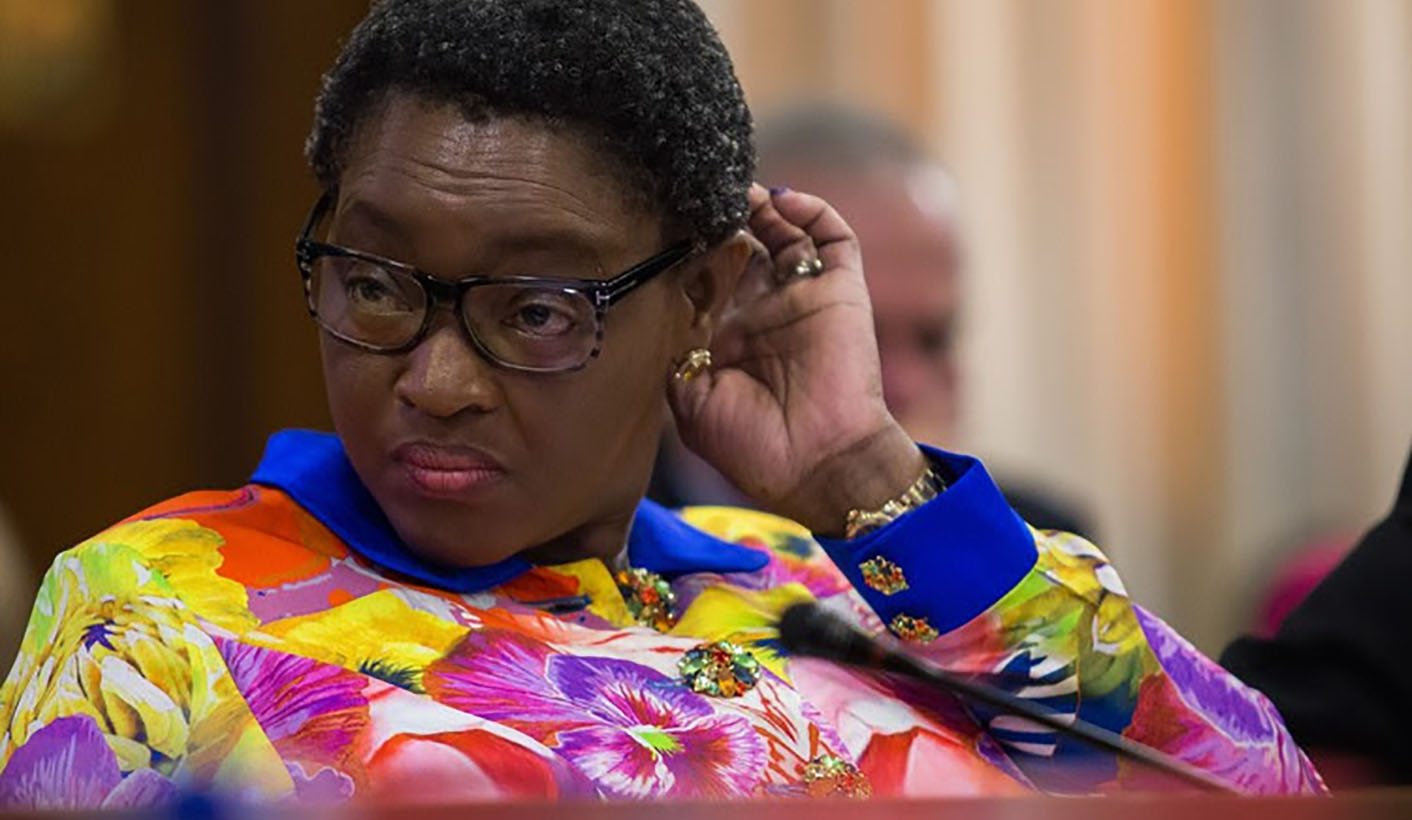
Minister Bathabile Dlamini was elected head of the ANCWL in 2015 (Archive Photo)
This brand of capture, the study found, also entailed the securing of parallel political, governmental, and decision-making structures that undermined the functional operation of government institutions.
In the case of Sassa, this included strengthening of the “Premier League” and the ANCWL which both have/had the power to determine leadership positions within the ANC and in turn, government.
The authors point out that understanding “State Capture” as “purely as a vehicle for looting” does not explain the full extent of the political project that enabled it.
“Institutions are captured for a purpose beyond looting. They are repurposed for looting, as well as for consolidating political power to ensure longer-term survival, the maintenance of a political coalition, and its validation by an ideology that masks private enrichment by reference to public benefit.”
An important aspect of this Sassa case study was to highlight the repurposing of this state institution for the purposes of reinforcing political support and power. This was explored in the Public Protector’s 2016 Blurred Lines: Party and State report.
Sassa, say the authors, was selected as a case study by the State Capacity Research Project, because this “capture” involving a state bill of R10-billion a month in social grant payments, did not directly involve the Guptas or any of their known associates.
“This is important as it highlights that State Capture is not contained or limited to only a closed circle of connected individuals, but is part of a much larger network of political players.”
While significant focus had been placed on commercial state-owned enterprises (a preferred locale for the Guptas), “State Capture” had infiltrated other spheres of government and had “infected its fundamental social service functions as well”.
The second reason for selecting Sassa, say the authors, is because it provided “a rare detailed example of the mechanics and modus operandi of State Capture.”
The final motivation was that the capture of Sassa “illustrates that State Capture is not just a form of ‘grand corruption’ resulting in a financial loss to the state and taxpayer, but is a political project that has a direct negative impact on the poorest and most vulnerable in our society; the consequences of which will undoubtedly be felt for years to come.”
There have been, say the authors, “a significant number of changes to South Africa’s political and economic landscape including the release of the #GuptaLeaks as well as revelations at parliament’s Eskom Inquiry which “have reaffirmed several of the key findings in the Betrayal of Promise report.”
That report provided a conceptual framework “for understanding the phenomenon of ‘State Capture’, outlining the mechanics by which state institutions are repurposed and the shadow state formed.”
“If indeed, as argued in the Betrayal of the Promise report, we are to expand our understanding of State Capture from merely the typical activities of bribery and corruption to being a broader political project, we have to extend our enquiry beyond just the financial flows of ill-gotten gains and definitively criminal activities, to include the currency of power, the bartering of political favours by manipulation of state institutions (trading of fear and favours) and determine the cost this places on all South Africans. It is these aspects of the political project which this report seeks to unpack, through a case study of the South African Social Security Agency (Sassa)”
Betrayal of the Promise identified the notion of a “power elite” as “a relatively well-structured network of people located in government, state institutions, S0Es (state-owned enterprises), private businesses, security agencies, traditional leaders, family networks and the governing party.”
The defining feature of membership of this group is/was direct and indirect access “to the inner sanctum of power to influence decisions”. This power elite exercised its influence both through formal and informal means.
“However, what unites the power elite is the desire to manage effectively the symbiotic relationship between the constitutional and shadow states. In order to do this, and in broad terms, this power elite loosely organises itself around a ‘patron or strongman’, who has direct access to resources, under whom a layer of ‘elites’ forms who dispense the patronage, which is then managed by another layer of ‘brokers or middlemen’.”
The Betrayal of the Promise report highlighted that ad hoc Inter-Ministerial Committees were key components of the constellation of kitchen cabinets that the Zuma-centred power elite used to exercise power including an IMC on Comprehensive Social Security.
Some of the startling, hard, cold face-smacking facts in the report is the escalation of irregular expenditure during former Sassa CEO, Virginia Petersen, and Bathabile Dlamini’s term in office.
This can be tracked, say the authors, in comparing Sassa annual reports.
“In 2010/2011, the year in which Dlamini became minister and following which Virginia Petersen become CEO of Sassa, the accumulated amount, from 2007, only stood at R8.8-million.”
By 2012/2013, the recorded amount allocated as irregular expenditure for that year was R47.4-million and in the latest 2016/2017 annual report Sassa recorded that the closing balance for irregular expenditure stood at a staggering R1.4-billion (of which R1.1-billion had been carried over from the previous year in which Petersen was still the CEO).
This equated to an increase of more than 15,000% in just six years.
The escalation, says the report “might only be a result of the high values attached to the irregular contracts and not in actual fact to the number of irregular contracts. Other than highlighting the large-value contracts, little information regarding the number of instances of irregular procurement is available in the public domain.”
However, this became more evident in 2016/2017 financial year when information was made available Scopa unpacking expenditure that added up to the R1.4-billion.
“Some of the payments involve the renewal of leases (R358-million), the appointment of forensic investigations (R75-million), and procurement of security services (R414-million), but perhaps the most relevant is the appointment of the work streams to which R43-million of the original budgeted R47-million had been paid prior to the cancellation of their contracts and the payment of CPS (R316-million) for the ‘re-registration’ of additional social assistance grants beneficiaries.”
The Construction of the Shadow State
Part four of How One Word Can Change the Game examines four components in the construction of the political project that developed into what has become known now as South Africa’s Shadow State.
This part of the report focuses on the role and motives of the corporate world, the “players” who “reside within the shadow state and are acting behind the scenes to ensure that the objectives of State Capture are achieved”. It also provides an assessment of the power dynamics between power elites in the executive and kitchen cabinets and other means by which “the DSD and Sassa were repurposed”. This in particular with regard the use of state resources “to manipulate and secure legitimacy from the voting public”.
The Constitutional court in 2012 highlighted the fact that Sassa and the bid committees did not verify the BEE credentials claimed by CPS.
“In its finding, the court lambasted CPS and Sassa for not adequately addressing this aspect in what was at the time one of the largest single supplier government contracts. This lack of appreciation for the underlying purpose of a preferential procurement mandate highlights the hypocrisy of the power elite’s professed commitment to RET and its opposition to WMC,” the authors state.
SA origins of CPS and the web that unfurled around it
The history of CPS and Net1 stretches back to the 1990s and is tracked in the report and it is one that is intricately linked to Sassa and the shadow network.
Net1 UEPS Technologies Inc., parent company of a range of subsidiaries which provide a selection of payment technology solutions and financial services (including CPS) was incorporated in Florida in May 1997 and was later listed on the Nasdaq Stock Market in 2005.
In 2004, the company acquired a South African company, Net1 Applied Technology Holdings Ltd (or Aplitec), a public company listed on the Johannesburg Stock Exchange (JSE). It was, in fact, Aplitec (a smart card company, whose founder and CEO was Serge Belamant) which had initially bought CPS from First National Bank (FNB).
At the time (1999) CPS had contracts to distribute grants to some 1.2-million people in South Africa and Namibia and worth R54-million.
“In the years that followed, Aplitec would acquire Moneyline (Pty) Ltd and New World Finance (Pty) Ltd (both micro-lending businesses) and later in 2006 Prism Holdings Ltd, which focused on “secure transaction technology, solutions and services” and which later became the owner of EasyPay Ltd”.
The report notes that when it emerged in March 2017 that Allan Gray held the second largest stake in Net1 (16% shareholding), and responding to a “strong outcry from the public”, the investment management company “engaged with Net1 and applied sufficient pressure (it would appear) on the company for its founder and CEO, Serge Belamant, to resign”. (Which he did in May 2017.) Allan Gray also decried the announcement that a multi-million-rand golden handshake went with it.
However, what had not been as prominently covered in the media, the authors found, was that the largest investor in Net1 is the International Finance Corporation (IFC), which is the World Bank’s investment arm, with a 19% share in the company.
“In April 2016, the IFC invested $107.7-million (almost R1.6-billion) in Net1.” Corruption Watch‚ the Black Sash Trust, and Equal Education have since filed a complaint with the Compliance Advisor/Ombudsman (CAO) of the IFC, requesting an investigation into the investment as it was made “despite the existence of overwhelming evidence of unlawful and unethical practices involving Net1 subsidiaries”.
The authors attempts to make visible Net1’s transformation adherence is not easy.
“Being a United States (US)-listed company makes it difficult to determine the degree of adherence of the company in terms of transformation outside of formally structured empowerment deals which often to not necessarily translate into actual empowerment in terms of actively participating in the business or its operations – as was clearly a requirement of the 2012 tender, and which CPS clearly had no intention of fulfilling, and which is supposedly a condition for RET.”
The report noted that the Memorandum of Agreement with its empowerment partner there was a “sly clause” which implied that of the 74.54% which CPS had indicated the empowerment consortium partners were to “manage and/or execute”, they would enter into a “Service Agreement” whereby CPS would do the work for 74.45% of the transaction fee.
“This would undoubtedly be considered by some as fronting and potentially fraud. The validity of the MoA, which is in the public domain and was part of CPS’s proposal, and its contents have never been disputed by Sassa or Net1/ CPS.”
It was important to note that it seemed that this MoA had not been disclosed in any of the court filings.
“It would seem that this information was only really scrutinised in November 2016 by amaBhungane, presumably after all investigations by the various authorities had or were in the process of being suspended.”
The companies and individuals who were signed on to be CPS’s empowerment partners at the time were never fully discussed by the courts.
This formed part of a deep investigation by amaBhungane which can be accessed here:
Friends with Benefits – enter Moyane, Monyeki and Hulley
The report sets out clearly how over and above the irregular contracts, “it would appear that the actual benefit that Net1 derived was as an indirect result of its appointment to pay grants, primarily from the sale of secondary financial services to grant beneficiaries”.
The problem here, note the authors, was not the pursuit of profit, “but rather how the interests of this private company became the interest of certain state institutions. A lucrative state contract was used by the company to gain preferential access to a market consisting of poor and vulnerable people”.
The supply of secondary financial services has always been part of the Net1 business strategy and is in fact documented in the company’s 2008 annual report.
“What is important to highlight is that this business strategy has long been known to veteran DSD officials, such as Zane Dangor, who led the negotiations with the various service providers in 2008/2009. It is a practice that has been frowned upon by those who understood the potential negative ramifications which could result from allowing a company that pays grants to also sell secondary financial services to beneficiaries.”
While the 2012 contract between Sassa and CPS stated that the “Contractor [CPS] shall not use data belonging to Sassa for any purpose other than for the performance of the services” it would appear that this restriction was never properly enforced.
“As a result, Net1 was able to move directly from establishing access to the market, to pushing its proprietary financial services that have nothing to do with the service provided to the state.”
It this aspect of the relationship with Sassa which reveals “the genius of its [CPS] business model: it was paid to establish a massive client base and ensure the payment technology is adopted by the major commercial businesses involved; it then leveraged beneficiary data and information to which only it had access to sell financial products, knowing that there is minimal risk of non-payment.”
This also highlighted that was able to allow Net1 to “offer this service at a lower interest rate than competitors due to our ability to deduct interest and principal directly from a borrower’s smart card and our knowledge of that individual’s payment history”.
It would appear from a statement made when responding to the 2015 tender that Net1 no longer viewed the distribution of social grants to be essential to its business development, note the authors.
“One of the critical questions that remain to be determined is: What are the possible financial benefits which could have been derived from the shadow deals and who, other than those already mentioned, might be involved?”
The report found that “unlike what has been established in terms of the Zuma-Gupta network” in the case of the DSD and Sassa many intricate details remained hidden.
It noted that “Whenever allegations of corruption were posed [in relation to Net1’s BEE partners] to then Net1 CEO, Serge Belamant, they were met with outright denials, obfuscation, and/or claims of ignorance.”
See the full report here:
The report also teases out the relationships between several well-known players in the deal, president Zuma’s lawyer (until recently), Michael Hulley, Patrick Monyeki, who would later become a leader of Dlamini’s technical work stream, and later SARS commission Tom Moyane (who was part of the original tender Bid Adjudication Committee).
The intervention by Hulley and the president’s son Duduzane Zuma “took place just three months after Zuma’s inauguration. It suggests that Net1/CPS enjoyed access and influence at the highest level. It also explains why Dlamini, a Zuma loyalist, so relentlessly supported the CPS approach after she became deputy minister, and then minister. Repurposing South Africa’s grant system was clearly a key element of the Zuma-centred power elite’s political project.”

Duduzane Zuma. (Archive Photo taken 12 July 2018 by Greg Nicolson
Monyeki, the authors note, “was allegedly involved in several other potentially corrupt deals.”
The first was related to allegations of collusion in a contract between the DCS and the Sasstec group, of which Monyeki was a 15% shareholder.
“It should be noted that during the Inquiry, Magwaza (Thokozani Magwaza Sassa CEO who resigned in 2017) indicated that “Monyeki’s name appeared on an NT (National Treasury) letter, in reference to potentially blacklisted individuals/service providers relating to DCS procurements.”
“It is reported that the initial contract that was awarded in 2012 while Monyeki was a technical adviser ballooned from R500-million to more than R1.4-billion in 2015.”

SARS’ former Number Two, Jonas Makwakwa. (Archive Photo)
Further investigations around unexplained money transfers to SARS’s second-in-command Jonas Makwakwa, which had been flagged by the FIC, indicated a “complex web of alleged corruption and money laundering”, all tied to a February 2015 payment of R17.87-million from the Department of Water and Sanitation in favour of a debt-collection company called New Integrated Credit Solutions.
“Monyeki was the sole director of Mahube Payment Solutions, which appears to have received a payment of approximately R4.5-million from New Integrated Credit Solutions, the reasons for which have yet to be fully explained.”
Both of these alleged incidences of potential corruption are still currently under investigation, the first by the SIU and the second by the Hawks.
“Both of these instances of alleged corruption have one thing in common: they are both linked to institutions which were under the leadership of Mr Tom Moyane.”
In 2012, Moyane was the National Commissioner of Correctional Services before his appointment in 2014 by then President Zuma as Commissioner of SARS, “even though this is a decision for the Minister of Finance to make – the Minister of Finance at the time, Nhlanhla Nene, was instructed to simply ratify this appointment”.
Monyeki’s “close friendship” with Moyane “is reported to be the main link to Makwakwa regarding the unexplained payments”.

Tom Moyane was appointed SARS commissioner in 2014. (Archive Photo by Leila Dee Dougan)
“Significantly, Tom Moyane was also the chair of the BAC for the 2012 Sassa grants payment tender. According to court records, Moyane convened the final BAC meeting, which took place in the absence of the only BAC member (NT official Willie Mathebula) who had raised concerns around CPS’s BEE proposal and the BEC’s decision to change the scoring after oral presentations.”
Moyane had been informed that Mathebula would not be able to attend the meeting but convened it anyway, stating that Minister Dlamini “was really unhappy that the meeting would be postponed”.
Moyane obtained a legal opinion – assumed to be from Hulley – the report notes, which indicated that the meeting could take place without Mathebula being present.
“In the final BAC meeting, Moyane told the other committee members that in his opinion the issues and questions raised by Mathebula were ‘really not serious questions that could have led us to postpone the discussions’.”
Monyeki, as member of Dlamin’s Ministerial Advisory Committee and the leader of the technical work stream, “has since played a significant role in the events which led to the ‘self-created’ crisis in March 2017”.
The report notes that there were three meetings at which Hulley was reported to have been present: the first on 18 December, which took place at the Intercontinental Hotel at O.R. Tambo International Airport and which was attended by Dlamini, DSD DG, Zane Dangor, Magwaza, and Sassa’s Gwen Ramokgopa.
The second took place on 30 December, allegedly at Hulley’s offices in Durban, and which was attended by both work streams and senior officials of Sassa and the DSD.
“However, Dangor refused to attend. In these meetings it appears that Hulley strongly supported the idea of negotiating a new contract with CPS. When questions were posed to Hulley, he initially denied any involvement in the matter. He later admitted: ‘My advice was sought (by Dlamini) upon what is permissible in terms of what the (Constitutional) court order says and what is impermissible’.”
The third meeting was over the weekend before the presentation to Scopa on 22 February, where the proposed way forward for Sassa had changed dramatically. Dangor later resigned.
In his testimony to the Constitutional Court’s inquiry into Dlamini’s personal liability for legal costs, the former DG indicated that “the minister had travelled to KwaZulu-Natal to meet with President Zuma on the Sunday (19 February), although cross-examination did not establish the purpose of the meeting”.
Although there are not many details of this meeting in the media, the report noted, “it is alleged that present at the meeting were a select group which included Hulley, (Zodwa) Mvulane (head of Sassa’s project office),and possibly even Tim Sukazi.”
Sukazi was the work stream leader for information and business system and banking services, and earned R36-million for his efforts. He was also the team leader for the legislative and policy work stream earning R7.6m in that instance.
“It is believed that it is in this meeting that it was decided that a ‘new’ approach would be adopted, i.e. for Sassa to sign a new contract with CPS for a period of two years and that they would only inform the Constitutional Court of the new contract as opposed to first consulting the court with regard to their plans,” the report notes.
Dlamini’s subsequent decision to act against the advice given in three separate legal opinions to approach the Constitutional Court regarding the extension of CPS’s services “was based on an unseen ‘new legal opinion’ that one can only assume came from Hulley”.
“Significantly, this decision appears to have taken place outside the formal government structures, namely Sassa and the DSD, as well as outside the ‘recommendations’ of the irregularly appointed work streams.”
Later the Presidency issued a statement saying it had no knowledge of Hulley’s involvement in the Department of Social Development.
“Given that he was probably not paid by the DSD/Sassa and that he was historically involved because of his ‘broader relationship with government’, the only conclusion possible is that he was directly representing President Jacob Zuma. All his interventions seem to have been to bend the rules in favour of CPS, especially with respect to shifting the biometric requirement from a ‘preferred’ to a ‘must’ condition.”
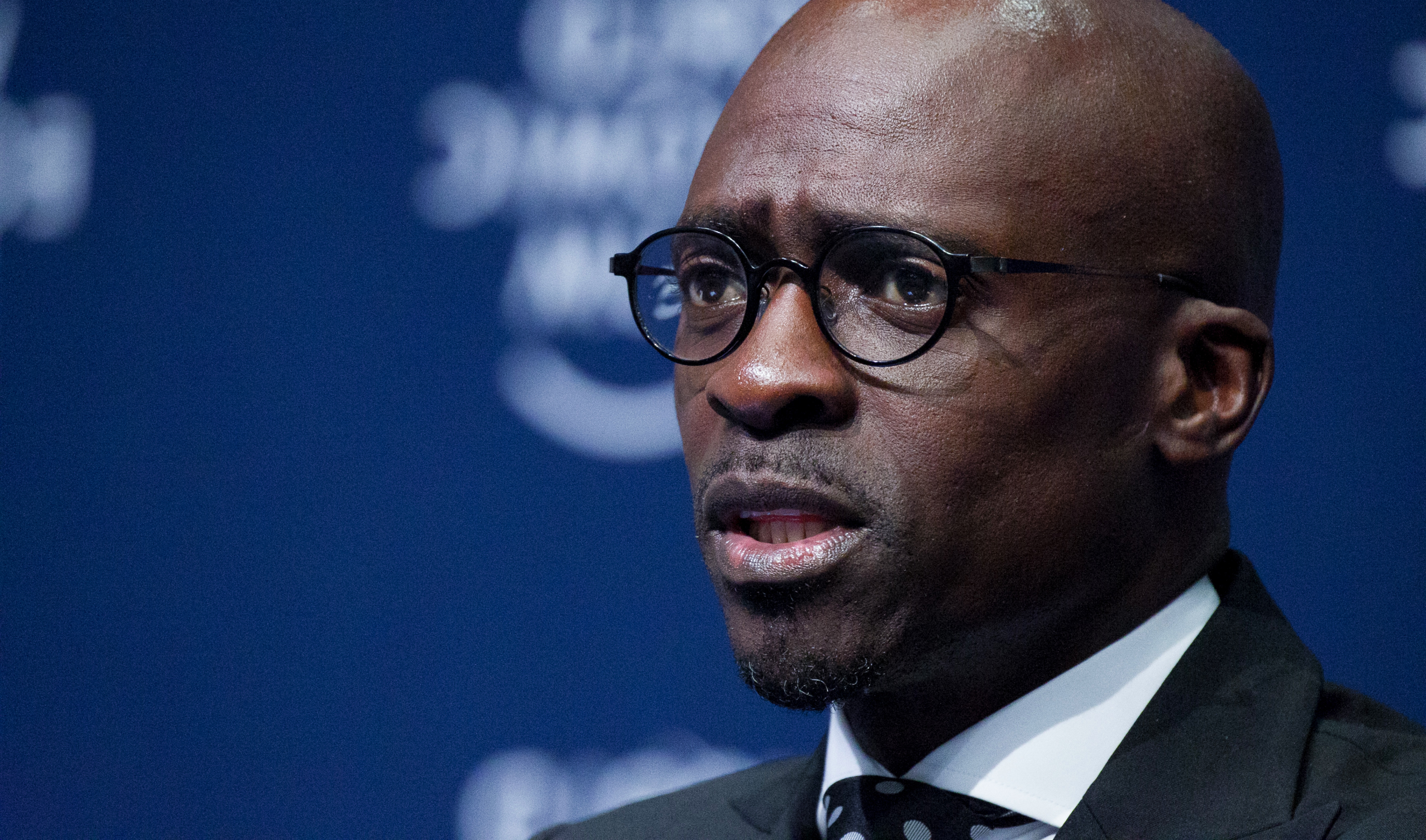
Malusi Gigaba was appointed Minister of Public Enterprises in 2010, (Archive Photo courtesy World Economic Forum / Greg Beadle)
The appointment of Malusi Gigaba as Minister of Public Enterprises and Dlamini as Minister of Social Development in 2010 marked, say the authors, “the start of concerted efforts by the Zuma-centred power elite to repurpose state institutions across a range of fronts.”
The focus to date has been on Gupta-linked strategies to capture and repurpose state institutions like Eskom, Transnet, and Denel but insufficient attention has been paid to the capture and repurposing of the DSD/Sassa, where direct links to the Gupta network cannot be discerned (despite the involvement of Duduzani Zuma).
“In the March 2017 reshuffle, Gigaba became Minister of Finance and Dlamini kept her post as Minister of Social Development. There is a clear and direct line between the 2010 and 2017 reshuffles,” the authors note.
Did Dlamini wilfully create the Sassa-Gate crisis? To answer this, it is necessary to consider not only the events which led up to the looming deadline of Sassa of 01 April 2017, but how the events were being presented to parliament and the public, as well as what transpired thereafter. And, in particular, what role did Sassa-Gate play in the cabinet reshuffle in March 2017?
It is important to bear in mind that Pravin Gordhan was reappointed Minister of Finance in 2015 after Zuma’s disastrous unilateral attempt at installing the pliant Des “Weekend Special” Van Rooyen.
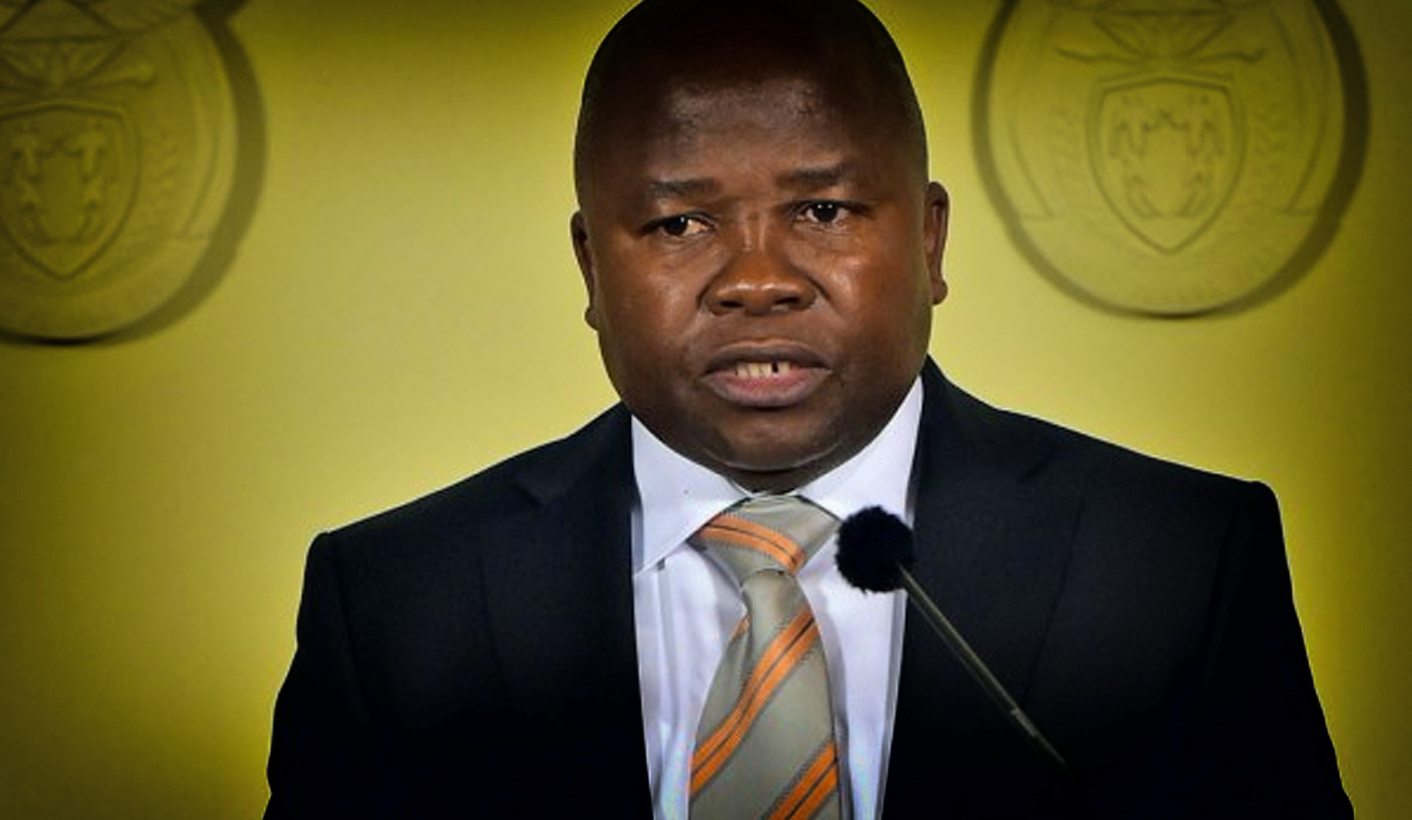
President Jacob Zuma (briefly) appointed Des van Rooyen as Finance Minister in December 2015. (Archive photo GCIS)
“By November 2016, Sassa and DSD officials were faced with the stark challenge of having to find a way for Sassa to take over grants in April 2017.”
What followed were numerous meetings with other government agencies (including National Treasury and the South African Reserve Bank).
“They came to the conclusion that the proposal set out by the work streams (which was supported by the minister) should not be the preferred closed-loop payment model.”
In January 2017, a Technical Task Team had been established, consisting of senior technical officials from Sassa, the DSD, SARB, and NT.
“They were given the task of developing options for how Sassa would be able to take over the payments of grants based on an open-architecture model. It is at this stage that the conflict between Dlamini and Gordhan would begin to emerge”
On 23 January, Dlamini sent Gordhan a briefing note which promoted the extension of CPS’s services and the work streams model for the payment of grants by Sassa.
“This was just one day before the TTT would present their options to the heads of the respective departments for deliberation, presenting both short-term solutions for Sassa taking over the payment of grants in April, with the long-term objective of a Sassa system being developed, which would be based on the open-loop model connected directly to the NPS.”
On 1 February, Gordhan wrote to Dlamini indicating that his preference was not to allow the contract with CPS to be extended and that the preferred model from NT’s perspective was to negotiate with all interested banks, including SAPO.
“NT’s perspective was to promote the use of electronic payment methods (which would exclude the biometric verification requirement) as much as possible and that only the cash distribution grants would then go out to tender.”
On 7 February, Magwaza wrote to treasury, requesting approval for deviation from standard procurement processes which would enable Sassa to extend the existing contract with CPS. Treasury responded the following day indicating it could not sanction the request for deviation without the Constitutional Court having been informed.
“The question that needs to be answered is what advantage was to be derived from not first approaching the Constitutional Court. There does not appear to be any rational reason for this advice, other than a possible knee-jerk resistance to the Constitutional Court that has not been friendly when it came to Zuma’s various cases,” note the authors.
The authors correctly note that the risk that the Constitutional Court would make a ruling that jeopardised the payment of grants was low but that the new approach “placed NT in a very difficult position”.
“It had already indicated that it would not approve any deviation without the Constitutional Court’s consent. If NT had approved a deviation, it would have been complicit in allowing for an invalid and irregular contract being entered into between Sassa and CPS.”
This would have set a precedent, which, from an institutional governance perspective, would be hard to recover from.
“On the other hand, if NT continued to refuse to allow the deviation (which it most likely would have done) and there had not been an intervention from Black Sash Trust and others, the risk of a contract not being signed increased and in turn increased the likelihood of beneficiaries not being paid on 1 April.
“Had this happened, the blame would have been placed directly on NT, which would have then provided Zuma with a relatively legitimate reason to fire Gordhan,” the report notes.
At a Women’s Day rally in August 2017 Dlamini announced: “So when the leadership of the ANC takes a decision, we all follow. In the ANC you are given orders, you implement. If you want to question, you question after implementation.”
This statement, say the authors, highlights “the underlying dogmatic ideology that serves to erase the invisible line between party and state that is embedded in the Constitution”.
“This ideology directs attention away from those avoiding accountability and in effect allows for the emergence of the shadow state created by the silent coup. It is these blurred lines between party and state which perhaps ‘allow’ the political party collective to turn a blind eye when state resource are utilised to the benefit of the party. This establishes an ethical dilemma in that it then also allows the Zuma-centred power elite to loot and plunder state resources for their own personal gain.”
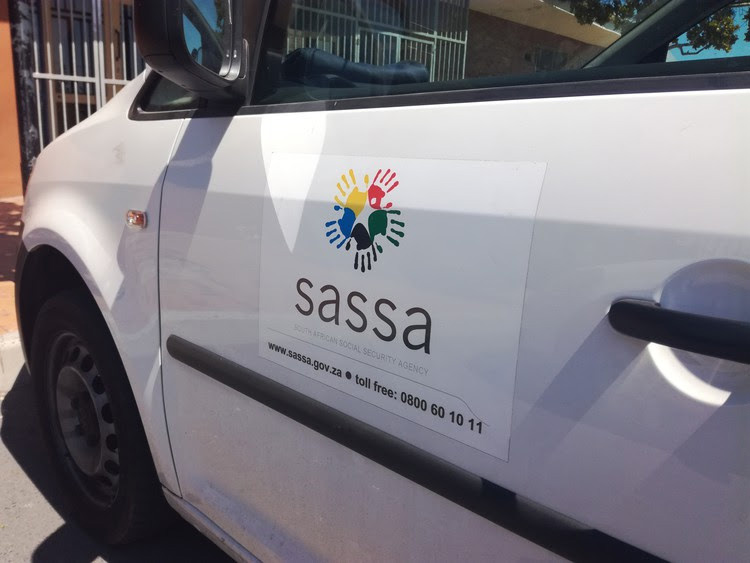
Archive photo: Barbara Maregele/(GroundUp)
When the DSD, Sassa, and CPS put a gun to the heads of millions of South Africans by threatening to stop grant payments without an alternative, say the authors, “the stark erosion of state capacity was revealed. The significant role civil society groups played, by approaching the Constitutional Court, needs to be acknowledged”.
The report concludes that it must be emphasised that “the story of the Sassa State Capture is far from over”.
Although it would seem that much progress has been made in removing CPS from the grants payment system, the most recent reports from the Constitutional Court Panel of Experts have raised significant red flags. DM

















